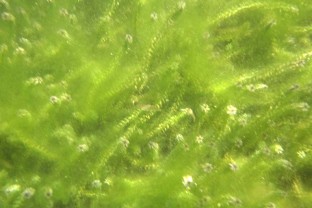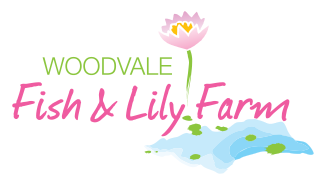Algae Fact Sheet
Algae, what’s it all about?
 Algae is not harmful, so don’t panic, it is a natural food source, a fish breeding ground, a shelter and provides a good place for baby fish and tadpoles to start their new lives. In fact fish are generally happier in green water, but visually it is unattractive to us, we want to see the clear water.
Algae is not harmful, so don’t panic, it is a natural food source, a fish breeding ground, a shelter and provides a good place for baby fish and tadpoles to start their new lives. In fact fish are generally happier in green water, but visually it is unattractive to us, we want to see the clear water.
Algae is a primitive plant that is exclusively aquatic, plant size can range from microscopic to large filamentous strands, colour can vary from brown/green through to bright green, texture can range from slimy to quite a dry feeling.
Algae will grow in nearly any body of water, you can place a bucket of fresh water in a sunny spot and over time algae will grow.
Filamentous algae is seasonal and will general grow more rapidly in spring and at the end of summer.
Single celled or green water algae can be present at any time, this generally occurs in new ponds during the first 4-6 weeks, when filters are cleaned out too often and ponds with no or incorrect filtration.
What is considered normal in a pond?
A balanced normal pond will have a fine layer of soft algae growing on the sides, up to 2-5cms in length; there will be fluctuations of water clarity over the year and fluctuations of the amount of filamentous algae growing.
What to do about green water?
Green water is easily managed.
Firstly by filtering, this means pumping the water out of your pond and into some sort of filtration device, be it a plant filter or a biological filter, it will then return clear and clean back into your pond. Filters are easy to set up and maintain and will greatly assist with the health and clarity of the water, with correct filtering you can expect water to clear within 1-4 weeks, you need to run your pump and filter system 24hours a day and you need to have the right sized pump and filter for your pond (speak to us we can tell you what you need)
UV light, these units will sterilize the water, killing and causing the singled celled algae to clump together to form larger particles, which in turn will be trapped in the filter. UV units can be expensive and the globes need to be replaced annually, but they do offer a year round clear water guarantee, water will clear within 2 weeks.
Bacteria’s such as Lysofoss and Zeolite (Volcanic rock, crushed into sand) can be added regularly and at anytime, it will clear green water, expect a 4 to 8 week process.
If you don’t want to use a pump or filter, then you will need 10cm layer of fine gravel on the base of the pond, add lots of aquatic plants (go for about a 75% coverage) add bacteria, add Zeolite (naturally occurring volcanic rock) and have patience, it could take up to 6-12months for complete clarity, but it will happen.
What to do about filamentous algae (string algae/ blanket weed)?
This is such a common concern, but don’t despair, it may look unattractive but it is not at all harmful to the ecology of you pond. In fact it can be very healthy and helpful by providing great place for fish and frogs to spawn, a place for baby fish to hide and a great natural food source for both fish and frogs. Think of it as weeds in the garden and pull it out by hand.
A healthy chemical free pond will always have some algae. You can manage its growth by having high fish stocks and good filtration and removing by it by hand.
You can regularly use Zeolite, naturally occurring volcanic rock (sand grade), swish enough through the water to create a cloud across the pond, put in enough to coat any algae growing. You will need to do this every 2 or 3 days, pulling out by hand anything that you can as you go, generally takes about 2 weeks to get under control. Use small amounts of Zeolite anytime you think you need to. You can never put in too much Zeolite.
Filter your water correctly and increase the amount of fish you have, fish will constantly graze and keep the algae under control.
If you have large pebbles (anything over 6cm is considered large) remove them from the pond, large pebbles or stones assist algae growth by giving the algae something to cling to, having a 10cm layer of gravel i.e. 3-5ml size, will be small enough for the fish to move the gravel, effectively cleaning it for you.
If budget is not a concern you can use copper ionizers, such as the Floatron unit, it is a disc containing a solar panel, about 30cm in diameter, which floats on the pond. A metallic electrode below the water line releases mineral ions controlling microorganism and filamentous algae, the units cost around $600.
Chemicals?
You will note that we have not mentioned any chemicals as a way to control any of the forms of algae. Dosing with chemicals and algaecides (including those that say they are fish and plant friendly) without remedying any underlying causes, will only ever give temporary respite at best. Algae is just a plant and any chemical that can kill algae will have an effect on the other plant life and fish in your pond, chemicals cannot distinguish between what you want to kill and what you want to grow.
Ponds are living things harbouring a large range of life, they are not swimming pools or spas. If you take a natural, realistic approach to water gardening then you can expect clean, clear water, expect healthy fish and plants and expect algae at different times or the year.
